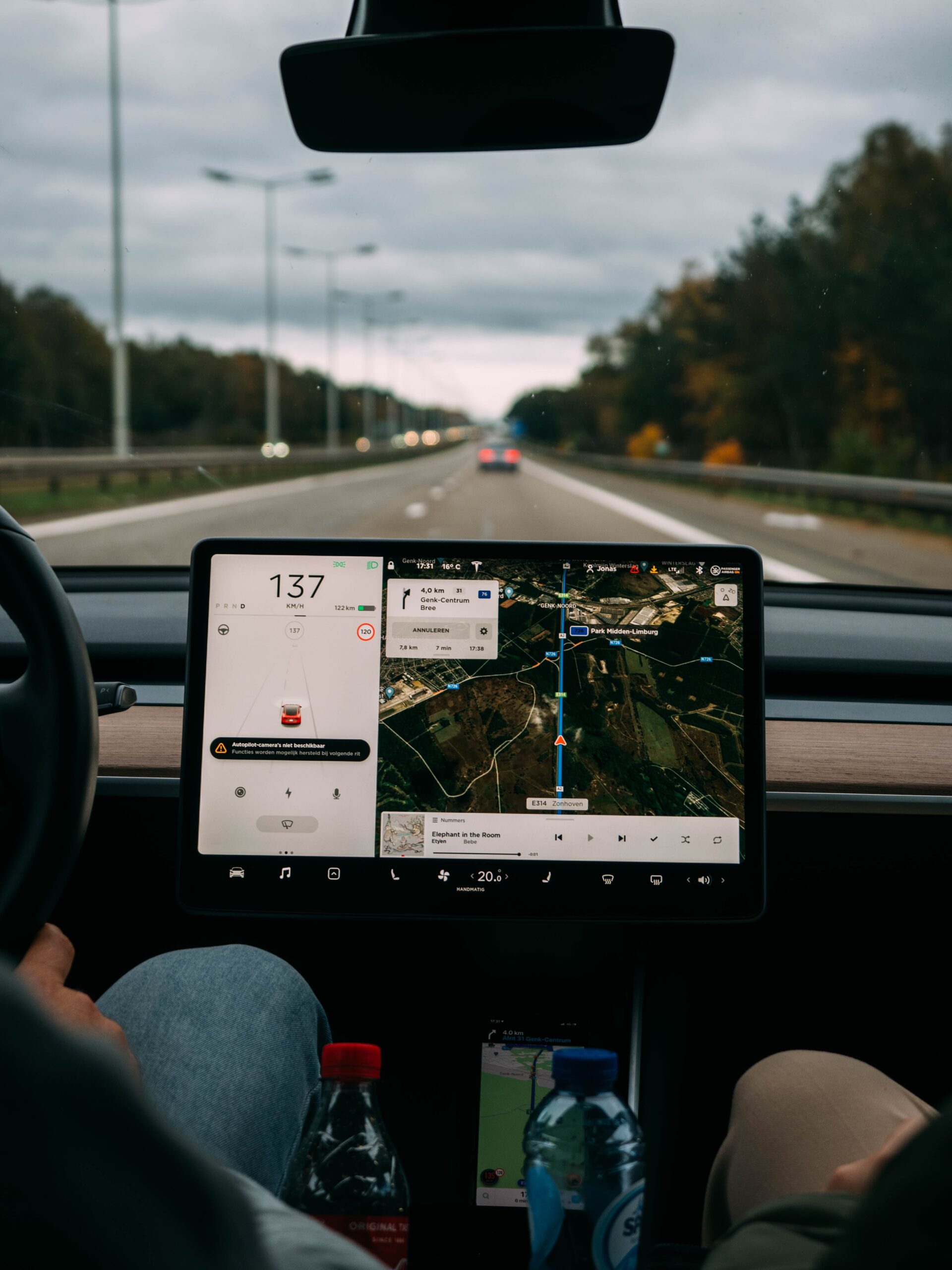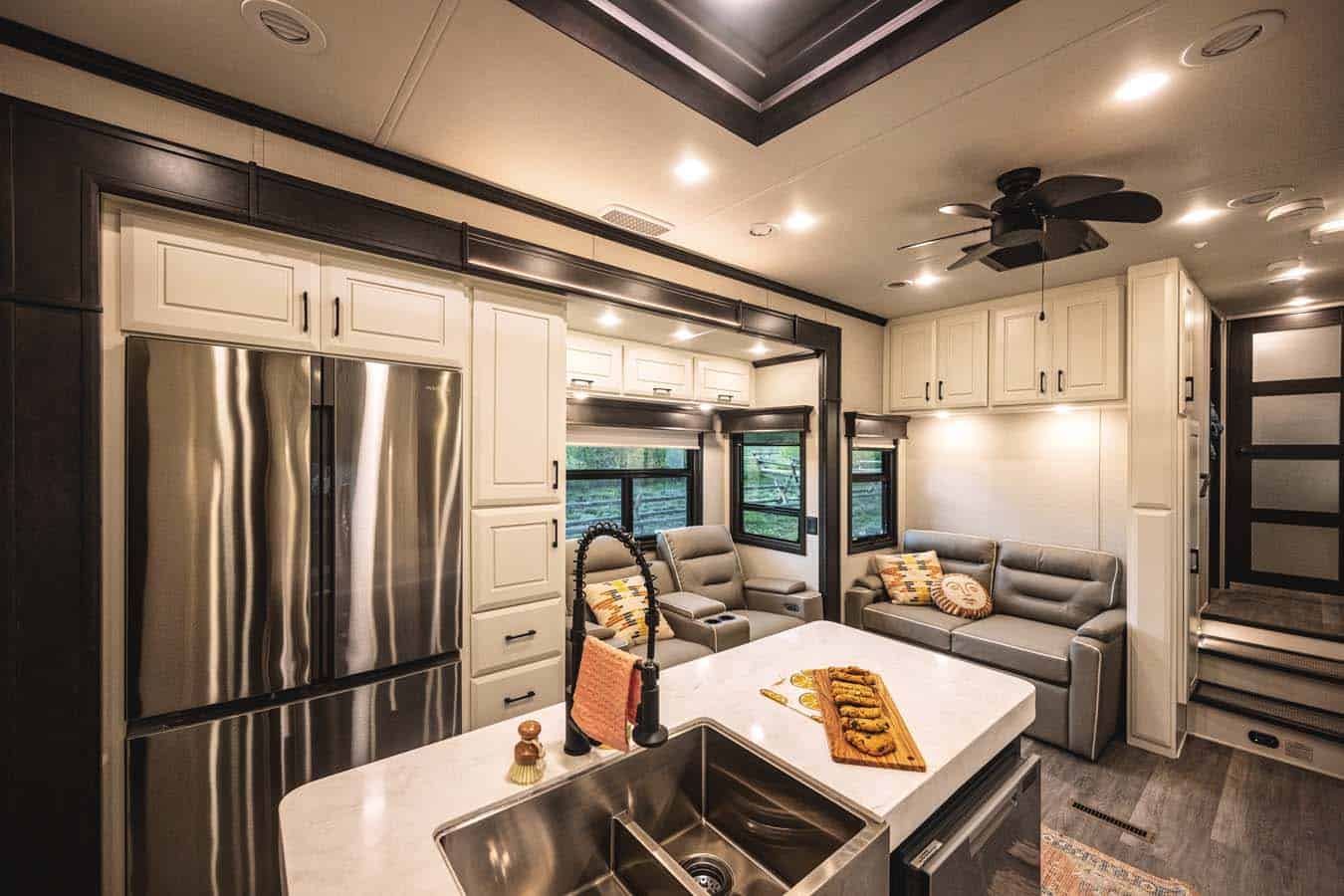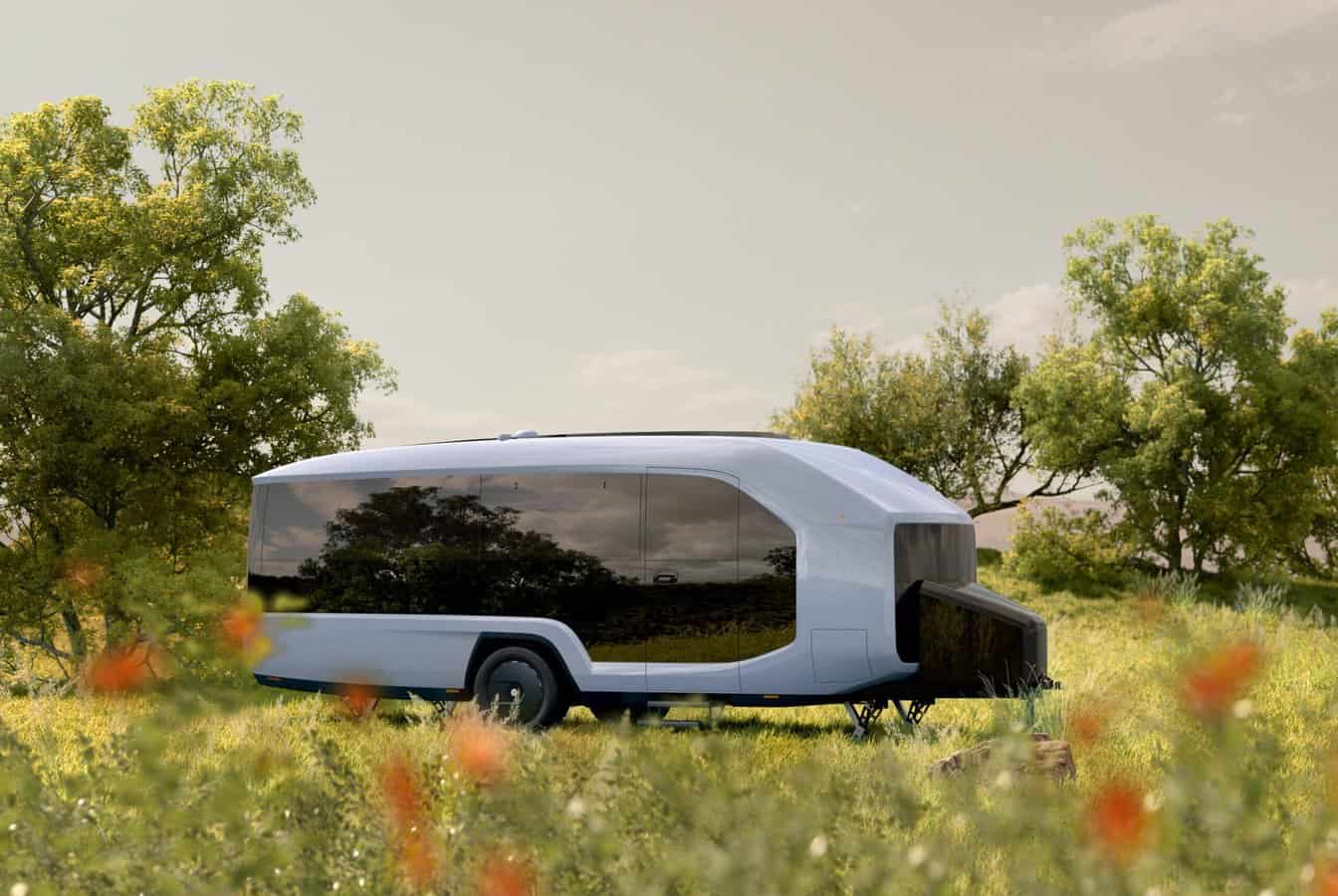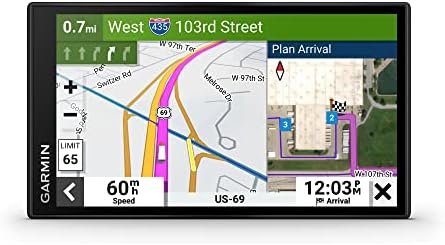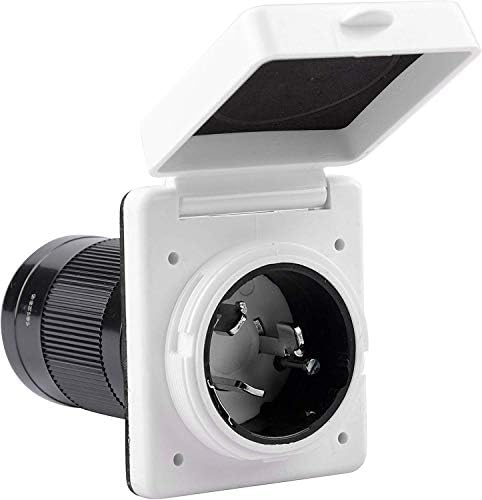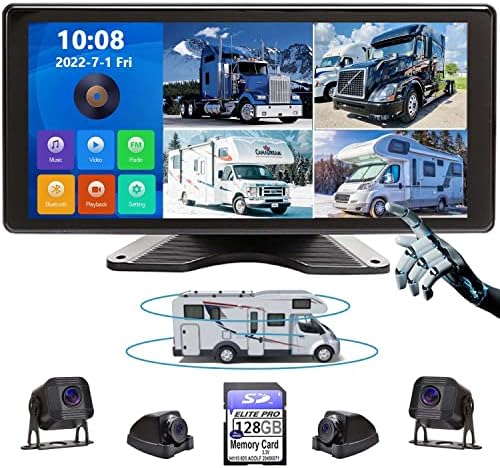Are you ready for a revolution in truck and RV electronics? Get ready to be amazed as emerging technologies take center stage and transform the way we experience life on the road. From cutting-edge navigation systems to advanced entertainment options, this article explores the exciting developments that are set to revolutionize the trucking and RV industries. Buckle up and get ready to embark on a journey into the future of mobile living.
Fundamentals of Truck and RV Electronics
Understanding basic electronics
When it comes to truck and RV electronics, it’s important to have a basic understanding of how the systems work. Electronics refer to the circuits and components used to control and manage various functions in vehicles. These components can include sensors, actuators, microcontrollers, and communication systems.
Role of electronics in trucks and RVs
Electronics play a crucial role in the functioning of trucks and RVs. They are responsible for controlling and monitoring various systems, such as engine performance, transmission, braking, and lighting. Without electronics, it would be nearly impossible to achieve the level of efficiency, safety, and convenience that modern vehicles offer.
History and evolution of automotive electronics
The history of automotive electronics dates back to the early 20th century, with the introduction of basic electrical systems in vehicles. Over the years, advancements in technology have led to the integration of more advanced electronic systems. From the introduction of fuel injection systems to the development of sophisticated engine control units (ECUs), the evolution of automotive electronics has greatly contributed to the overall improvement of vehicle performance and reliability.
Modern Day Applications of Electronics in Trucks and RVs
Telematics Systems
Telematics systems in trucks and RVs provide a wide range of functionalities, including real-time monitoring of vehicle health, remote diagnostics, and fleet management. These systems utilize GPS and cellular technologies to gather and transmit data, enabling better control and optimization of vehicle operations.
Advanced driver-assistance systems (ADAS)
ADAS technologies have revolutionized the safety features in trucks and RVs. From adaptive cruise control to lane departure warning systems, ADAS uses sensors and cameras to monitor the vehicle’s surroundings and assist the driver in avoiding collisions or other potential hazards.
GPS navigation systems are now a standard feature in most trucks and RVs. These systems provide accurate mapping and turn-by-turn directions, ensuring that drivers reach their destinations efficiently. Additionally, communication systems allow for seamless connectivity and the ability to stay in touch with others while on the road.

Safety and Security systems
Safety and security systems, such as anti-lock braking systems (ABS), airbag systems, and alarm systems, are integral for ensuring the well-being of both the driver and the passengers. These systems utilize advanced electronics to detect and respond to potential dangers, providing an added layer of protection.
Emerging Technologies Revolutionizing Truck and RV Electronics
Concept of Internet of Things (IoT)
The Internet of Things (IoT) is a game-changer in the world of truck and RV electronics. It involves the connectivity of devices and systems through the internet, allowing for seamless data exchange and communication. In the context of trucks and RVs, IoT enables enhanced vehicle monitoring, predictive maintenance, and improved fuel efficiency.
Impact of Artificial Intelligence and Machine Learning
Artificial Intelligence (AI) and Machine Learning (ML) have the potential to revolutionize truck and RV electronics. AI-powered systems can analyze data from various sensors and make intelligent decisions, such as optimizing fuel consumption or detecting maintenance issues. ML algorithms can also learn from patterns and data, enabling predictive maintenance and optimized routing.
Role of Augmented Reality and Virtual Reality
Augmented Reality (AR) and Virtual Reality (VR) technologies have the potential to transform the truck and RV experience. AR can provide real-time information about road conditions, traffic, and even display directions directly on the windshield. VR, on the other hand, can be used for training programs, allowing drivers to simulate various scenarios and practice their skills in a safe environment.
Influence of Internet of Things (IoT) in Truck and RV Electronics
Wireless Connection and Smart Vehicle Conduction
One of the significant benefits of IoT in truck and RV electronics is the ability to establish wireless connections between various vehicle components. This allows for seamless data exchange, enabling real-time monitoring and control of multiple systems. With IoT, vehicles can communicate with each other and with external devices, creating a smart and interconnected network.
OBD2 Scanners and IoT
IoT has transformed the functionality of On-Board Diagnostics (OBD2) scanners. These scanners, when connected to the vehicle’s OBD2 port, can gather and transmit data about the vehicle’s performance, such as engine temperature, fuel efficiency, and emission levels. This data can be accessed remotely through IoT connectivity, allowing for remote diagnostics and proactive maintenance.

Predictive maintenance and IoT
IoT enables predictive maintenance in trucks and RVs by continuously monitoring various vehicle parameters. By analyzing real-time data and comparing it with historical trends, IoT systems can identify potential maintenance issues before they become major problems. This proactive approach reduces downtime, improves vehicle reliability, and lowers maintenance costs.
Cost efficiency and fuel management via IoT
IoT plays a crucial role in optimizing fuel management in trucks and RVs. By utilizing data from various sensors, such as fuel level, engine load, and driving conditions, IoT systems can provide real-time feedback and optimization strategies to maximize fuel efficiency. This not only reduces fuel consumption but also lowers operational costs for trucking companies and RV owners.
Application of Artificial Intelligence and Machine Learning in Truck and RV Electronics
AI for personalized driving experience
AI technology can provide a personalized driving experience in trucks and RVs. By analyzing driver behavior and preferences, AI systems can adjust vehicle settings, such as seat positions, climate control, and entertainment options, to create a customized driving environment. This enhances comfort and convenience for the driver, making long journeys more enjoyable.
Role of Machine Learning in predictive maintenance
Machine Learning algorithms can analyze vast amounts of data and identify patterns that indicate potential maintenance issues. By continuously learning from sensor data and historical records, ML systems can predict when specific components or systems are likely to fail, allowing for proactive maintenance actions. This not only prevents unexpected breakdowns but also extends the lifespan of critical vehicle components.
By utilizing historical traffic data, weather conditions, and real-time information, ML algorithms can optimize routing and navigation for trucks and RVs. These systems can suggest the most efficient routes based on factors like fuel consumption, traffic congestion, and road conditions. By reducing travel time and improving route planning, ML-powered navigation systems enhance efficiency and productivity.
Adoption of Augmented Reality (AR) and Virtual Reality (VR) in Truck and RV Electronics
AR technology can enhance navigation systems in trucks and RVs by overlaying real-time information onto the driver’s field of view. It can project directions, traffic information, and points of interest onto the windshield, allowing drivers to keep their eyes on the road while accessing important information. This improves safety and reduces distractions.

VR for driver training programs
VR technology provides a realistic and immersive environment for driver training programs. It allows drivers to simulate various driving scenarios, such as adverse weather conditions or emergency situations, in a controlled setting. This type of training enhances skills, improves reaction times, and fosters a better understanding of potential risks, ultimately leading to safer driving.
Improving safety with AR and VR technologies
Both AR and VR technologies have the potential to improve safety in trucks and RVs. AR can provide real-time information about potential hazards, speed limits, and road conditions, keeping the driver informed and alert. VR-based training programs can simulate challenging situations, improving driver skills and reducing the likelihood of accidents on the road.
Future of Truck and RV Electronics with Emerging Technologies
Future prospects of IoT in the automotive industry
The future of truck and RV electronics is heavily reliant on the further development and integration of IoT technologies. As IoT continues to evolve, we can expect even more advanced connectivity between vehicles and external systems, leading to improved operational efficiency, enhanced safety features, and increased vehicle autonomy.
The potential of AI and Machine Learning
AI and Machine Learning have immense potential in transforming truck and RV electronics. With ongoing advancements in algorithms and computing power, AI-powered systems will become even more capable of analyzing complex data sets and making intelligent decisions. This will further enhance vehicle performance, safety features, and overall user experience.
Projection of AR and VR technology
AR and VR technologies are poised for significant growth in the truck and RV electronics industry. As the hardware becomes more accessible and the software more advanced, we can anticipate widespread adoption of AR-based navigation systems and VR-based training programs. These technologies will continue to improve safety, convenience, and efficiency in the trucking and RV sectors.
Challenges in Implementing Emerging Technology in Truck and RV Electronics
Security Concerns with IoT
The increased connectivity of IoT in truck and RV electronics also brings about security concerns. With more devices and systems connected to the internet, there is an increased risk of cyber threats. Ensuring the security of data transmission and protecting against unauthorized access becomes crucial to maintaining the integrity and safety of truck and RV electronics.
Complexity in AI and Machine Learning
The implementation of AI and Machine Learning algorithms in truck and RV electronics requires advanced expertise and computational resources. Developing and maintaining these systems can be complex and costly. Additionally, ensuring the accuracy and reliability of AI and ML algorithms is vital, as they play a critical role in the decision-making process of various vehicle systems.
Restrictions and limitations of AR and VR in vehicles
While AR and VR technologies offer numerous benefits, there are still restrictions and limitations that need to be considered. Integration into the vehicle’s design, potential distractions to the driver, and the need for specialized hardware are all factors that need to be addressed. Striking a balance between enhanced features and maintaining safety is crucial when implementing AR and VR in truck and RV electronics.
A Look at Market Leaders Innovating in Truck and RV Electronics
Companies leading in IoT applications
Market leaders in IoT applications for trucks and RVs include companies like Trimble, Omnitracs, and Geotab. These companies provide comprehensive telematics solutions that allow for real-time vehicle monitoring, efficient fleet management, and advanced analytics.
Innovations in AI and Machine Learning
Companies such as NVIDIA, Intel, and Tesla are driving innovations in AI and Machine Learning for truck and RV electronics. These companies are developing advanced AI-powered systems, enabling autonomous driving capabilities, predictive maintenance, and improved vehicle performance.
Pioneers in AR and VR technology
In the realm of AR and VR technologies, companies like WayRay, Oculus (a subsidiary of Facebook), and Magic Leap are pioneering the development and integration of these technologies in truck and RV electronics. They are pushing the boundaries of what is possible in terms of navigation systems, driver training, and vehicle safety.
Conclusion: Transformation of Truck and RV Electronics
The emergence of IoT, AI and ML, and AR and VR technologies is transforming the world of truck and RV electronics. These technologies are revolutionizing the way vehicles are operated, maintained, and experienced. From better connectivity and monitoring to safer driving and improved fuel efficiency, the integration of emerging technologies promises a future that is smarter, more efficient, and more enjoyable for both consumers and the industry as a whole. With continued innovation and advancements, we can expect to see even more remarkable developments in the world of truck and RV electronics in the years to come.



